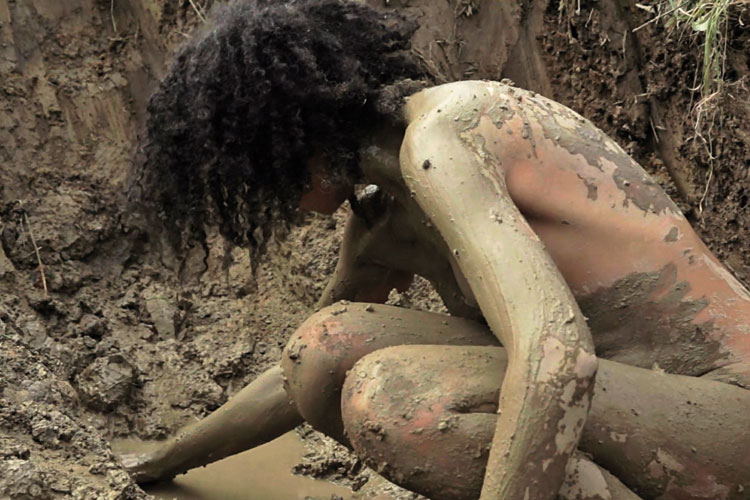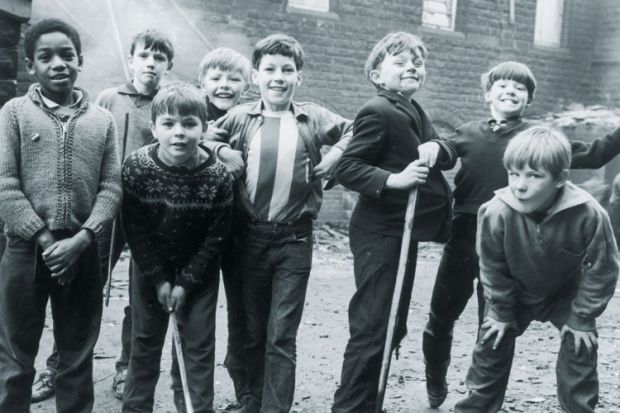“I was…friendless and homeless, roaming the streets of Liverpool. I walked over to Southport, and finding nothing to do, walked by Ormskirk to St. Helens, on to Warrington, thence to Manchester; again on to…Hull, where I took to singing, dancing and rattlebones, which…was easier than begging.”
James Johnson’s wanderings through northern England in December 1862 are unremarkable for a working-class man seeking employment at the height of the Lancashire Cotton Famine. Yet his journey was rather different: despite the hardship he endured, it was a strangely liberating experience for a man who had recently played a part in the very event – the American Civil War – that had caused the embargo of cotton and so created these awful conditions in England. An African American slave, Johnson had escaped to Union-held territory earlier in 1862 and then travelled to Britain to secure his freedom away from a country stained by the “Peculiar Institution” of slavery. He finally settled in Oldham, and his brief autobiography was published posthumously in 1914 by his Lancashire-born daughter, Alice Johnson. It lay almost completely unread until its rediscovery during the 2007 bicentenary of the abolition of the slave trade in the British Empire.
Records of working-class black voices in Victorian Britain, especially beyond London, are rare, and the work of recovering them is vitally important for the academics, film-makers, writers, artists and performers who gathered on 30 April and 1 May at the University of Central Lancashire’s newly inaugurated Institute for Black Atlantic Research for the symposium Lost Children: The Black Atlantic and Northern Britain.
The St Kitts-born, Leeds-raised writer Caryl Phillips read from his latest novel, The Lost Child, partly a prequel to Emily Brontë’s Wuthering Heights. In considering this diasporic history, Phillips riffs on the description of Heathcliff as “a regular black”, brought from the slave port of Liverpool to the Yorkshire Moors, to speculate about a black presence shadowing and helping to create this Gothic masterpiece. As the symposium participants Adam Low and Martin Rosenbaum suggest in their documentary A Regular Black: The Hidden History of Wuthering Heights, rumours of Africans kept on after the abolition of slavery as farm labourers in Dent, close to where the Brontë sisters went away to school, are seen as crucial to Emily’s fevered imagination. Her death in Phillips’ novel is preceded by her mixing fact and fantasy and using her own family as the source for Heathcliff’s arrival at Wuthering Heights: “Dear Charlotte, do you remember when Papa deserted us for Liverpool and returned with the boy? The strange boy with blazing eyes who had lost his place in the world. Papa wrapped him in his cloak and brought him to us, do you remember?”
Phillips weaves this narrative of a famous fictional lost child with that of two mixed-race boys growing up in Leeds in the 1960s and 1970s, where the gritty late-industrial realities and insular racism afforded no easy escape. What is remarkable to Phillips is how little had changed in terms of the demonising of the Other since the time when the British Empire painted the maps pink. This is exacerbated by the lack of a black community in these mean streets. In an autobiographical vignette in Phillips’ 2001 essay collection A New World Order, he describes this petty racism: “I am seven years old and everything is happening too fast. I kiss a girl outside school. On the cheek. A light kiss, but nevertheless the kind of kiss that seven-year-olds should not know about. A cluster of parents stand by and look on with horror…My sooty touch on their tiny Desdemona in the working-class streets of Leeds.”
As part of the symposium, Phillips read from his new novel at the Brontë Parsonage Museum in Haworth. In the question and answer session that followed, he was at pains to stress his affiliation to Yorkshire despite its early disavowal of him, affirming that his regional roots were as important to him as the cosmopolitan routes that have led him to a life in the US. He described his debt to a range of Northern realist writers from Barry Hines and Shelagh Delaney through to Alan Bennett, whose Yorkshire voice is a recognisable source whenever Phillips’ fiction is set in “God’s own country”. He visibly warmed to the local audience and his mid-Atlantic vowels had disappeared by the end of the evening, illustrating the importance of fleshing out multiple identities – class, regional, national and transnational – in order to fully understand what the scholar Paul Gilroy has termed Black Atlantic modernity. These multiple identities are often obscured and ignored in metropolitan accounts.

At the same time, a new generation of black artists is getting to grips with these multiple identities and trying to make sense of being black in northern Britain.
In 2009, the Leeds artist Simeon Barclay explored this history in his re-enactment of Henry “Box” Brown’s 1851 visit to the city. In front of Leeds City Museum, Barclay emerged from a packing case in which he had hidden for nearly three hours. Dressed in Victorian garb, he ventriloquised a speech that had been made close to that very spot by Brown more than 150 years earlier.
It was the end point of Barclay’s journey in the box from Bradford to Leeds, in homage to Brown. A fugitive slave who had escaped in a packing case from Richmond, Virginia to Philadelphia, Pennsylvania in 1849, Brown two years later echoed that dramatic journey when, duly boxed up, he travelled by rail from Bradford to Leeds.
Barclay’s restaging of Brown’s West Yorkshire “escape” was stunningly successful, attracting large crowds and drawing the media spotlight to an important black figure who had been neglected in local and national historical narratives. His aim was to spectacularly reinsert “Box” Brown into the region’s historical memory. He achieved this and more, through a guerrilla memorialisation that works against the silencing of minority histories: as Brown had collapsed geography in his 1851 re-enactment of his escape, so Barclay collapsed chronology in his 2009 homage.
Artist and writer Jade Montserrat, who participated in the Uclan symposium, was born and brought up near Scarborough, where, she says, she was “a lonely black presence”. She has also used the Gothic sensibilities of the Brontës to create works that explore her blackness. In her video performance piece Clay (which featured in the symposium as part of the text and film performance Burial, the Brontës and Lost Children), she uses her naked black body to dig and mould the Yorkshire earth into what seems to be a burial pit or grave. She describes the scene as “bleak, remote, unforgiving, unhearing, without union or unity with other bodies”. Her body has no companion, it has “lost its place in the world”, and there seem to be no other bodies like it in the historical landscape.
In her accompanying text, Montserrat describes how “Heathcliff, representative of the dispossessed, and I are aliens dropped into this ancient landscape. Appearances suggest we were not meant to be here. Alienation is magnified by a landscape scarred by borders, a testimony to territorial ownership.”
And yet Montserrat’s piece has a haunting beauty and a redemptive coda: as she digs the pit, mud caking her body, she moulds mud bricks and builds them into the shape of a wall, mimicking the Yorkshire art of drystone walling, constructing a shelter in the local manner as she digs her grave. The border she constructs might just be a sheltering home. Citing post-colonial theorist Homi Bhabha – “the state of emergency is also always a state of emergence” – she seems to be saying that for African Atlantic people who have found themselves in Northern England as “lost children” and are building lives out of the surrounding dangers, there is hope in survival, in making their presence felt.
Alan Rice is professor in English and American studies, and co-director of the Institute for Black Atlantic Research, at the University of Central Lancashire. He is author of Creating Memorials, Building Identities: The Politics of Memory in the Black Atlantic (2010).
Register to continue
Why register?
- Registration is free and only takes a moment
- Once registered, you can read 3 articles a month
- Sign up for our newsletter
Subscribe
Or subscribe for unlimited access to:
- Unlimited access to news, views, insights & reviews
- Digital editions
- Digital access to THE’s university and college rankings analysis
Already registered or a current subscriber?
